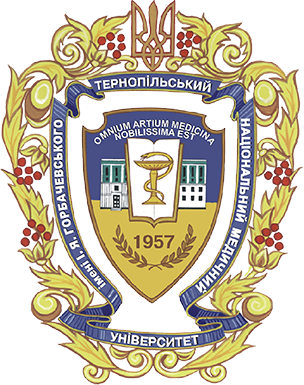How It Is Abroad and How It Is Here…
In the modern world, science is one of the most powerful forces shaping the future of humanity. It is a field where the efforts and perseverance of scientists can change the lives of millions, opening new horizons in knowledge and technology. It is especially inspiring when successful scientists who have gained recognition abroad return to their homeland to share their achievements and experience.
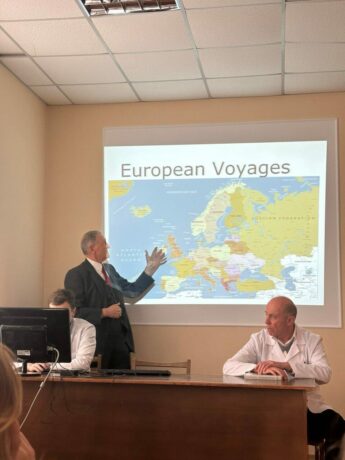
One such prominent figure is Professor Mykhailo Kalynskyi, who, after a challenging journey to success, earned great recognition in the United States. A distinguished scientist and head of the Department of Applied Medical Sciences at Murray State University’s School of Nursing and Health Professions (Kentucky, USA), he remains connected to his roots and strives to help his home country. He has delivered scientific reports and lectures in France, England, Italy, Spain, Germany, India, and Indonesia.
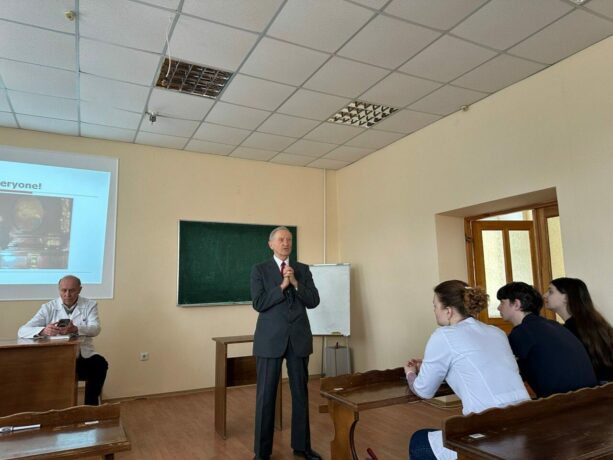
Professor Stepan Vadziuk, head of the Department of Physiology with Fundamentals of Bioethics and Biosafety, introduced this renowned scientist and Fulbright professor, who visited our university for the third time. This time, he came to share insights into the peculiarities of student education in the USA and other countries.
Professor Kalynskyi’s analysis showed that medical education in European countries takes place both in medical faculties of classical universities and in independent medical universities. The number of the latter is 35 institutions, excluding those located in post-Soviet countries.
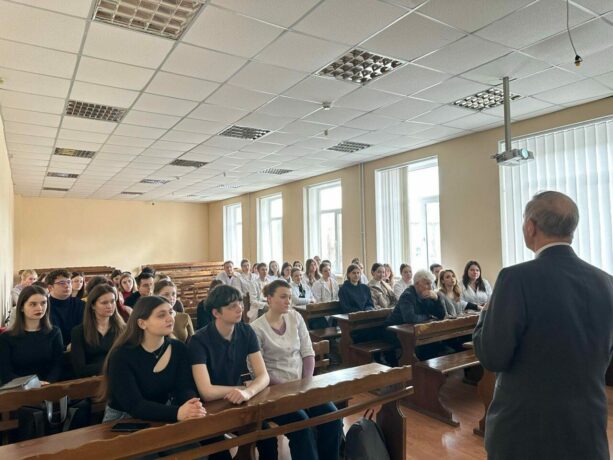
The minimum duration of medical training in the USA is 11 years, including 4 years of undergraduate studies, 4 years of medical school, and additional years of clinical rotations and residency (residency, fellowship). The number of credits allocated for studying physiology among future medical professionals ranges from 13 to 30 (compared to 9 in our university). This difference exists because, abroad, physiology is studied as part of general biomedical sciences at the undergraduate level. After completing this stage, it is studied again for 1 or 2 years within medical school. Furthermore, depending on the specialty, physiology is revisited in the context of clinical practice.
The most widely used textbook among students in both the USA and Europe is Medical Physiology by Guyton and Hall.
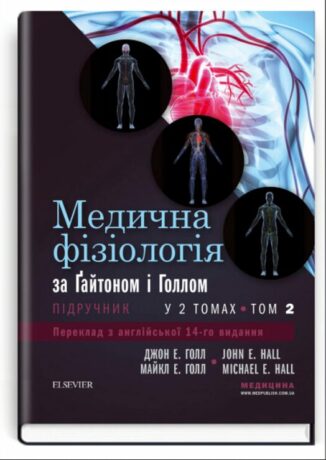
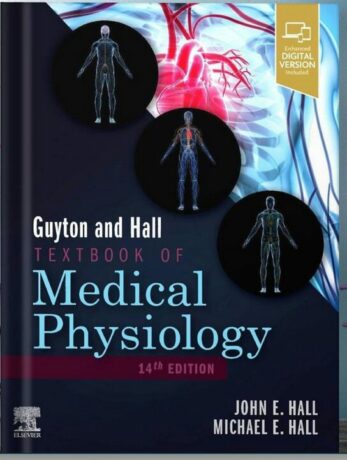
Professor S. Vadziuk, adding to Professor M. Kalynskyi’s remarks, noted that three years ago, the department’s faculty participated in translating this textbook into Ukrainian. Since then, our students have had the opportunity to study physiology according to global standards. They are also supported by the department’s faculty, 80% of whom have been recognized by students as the best instructors at the university.

